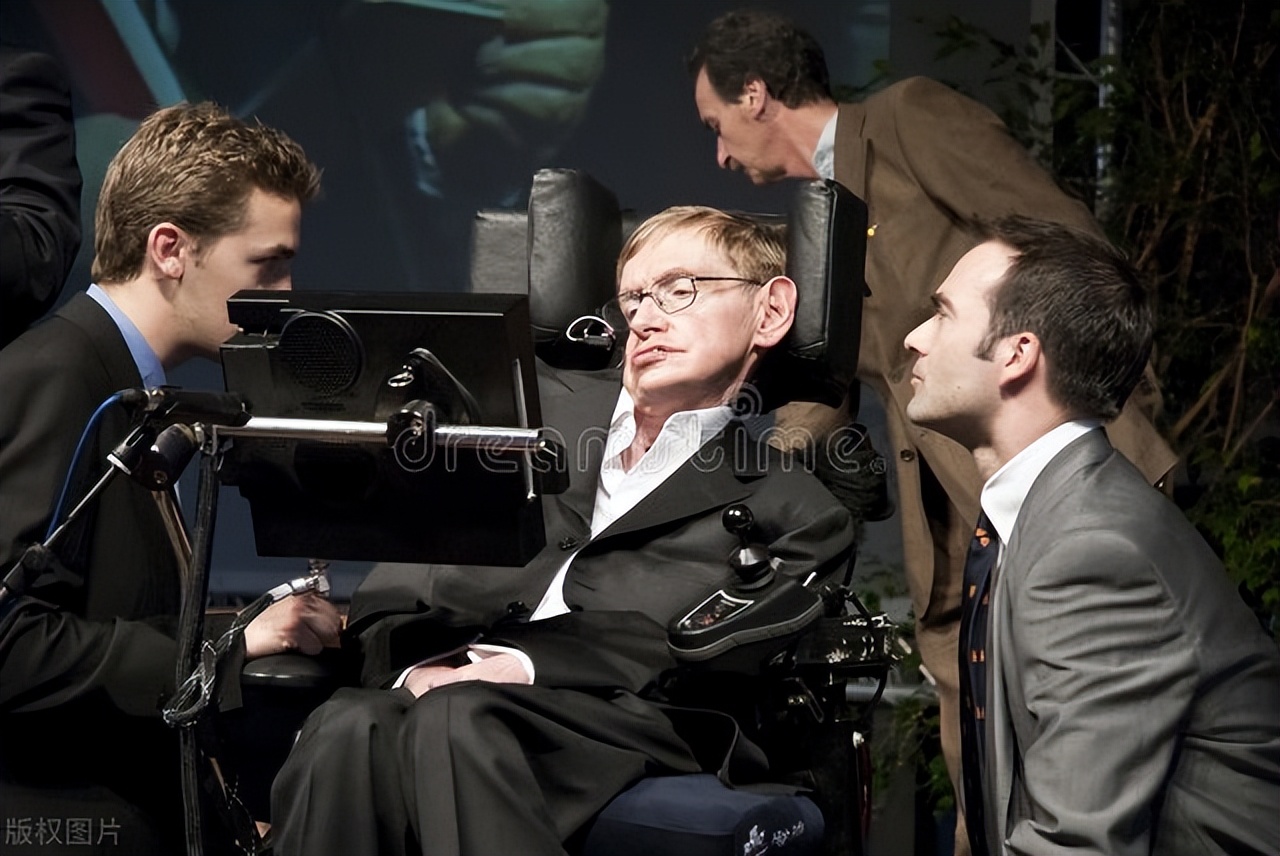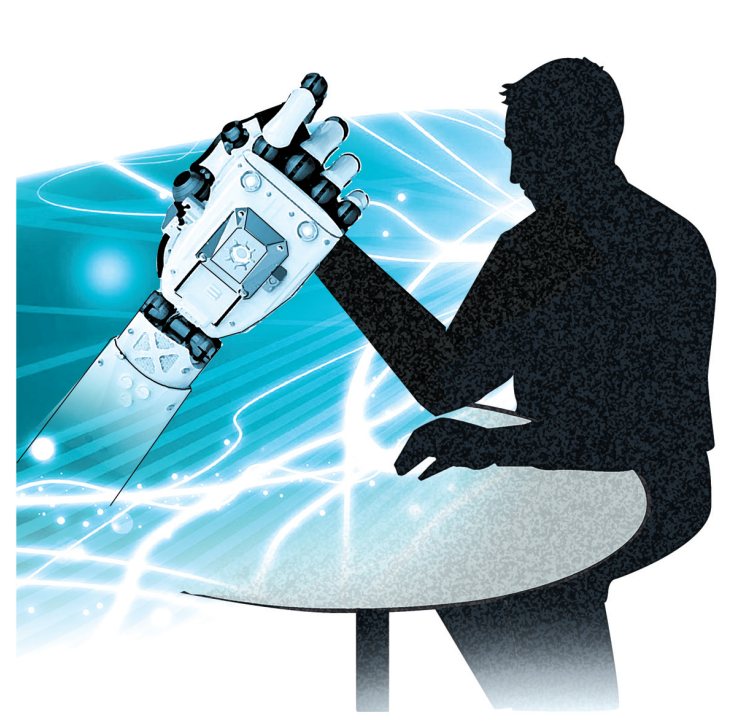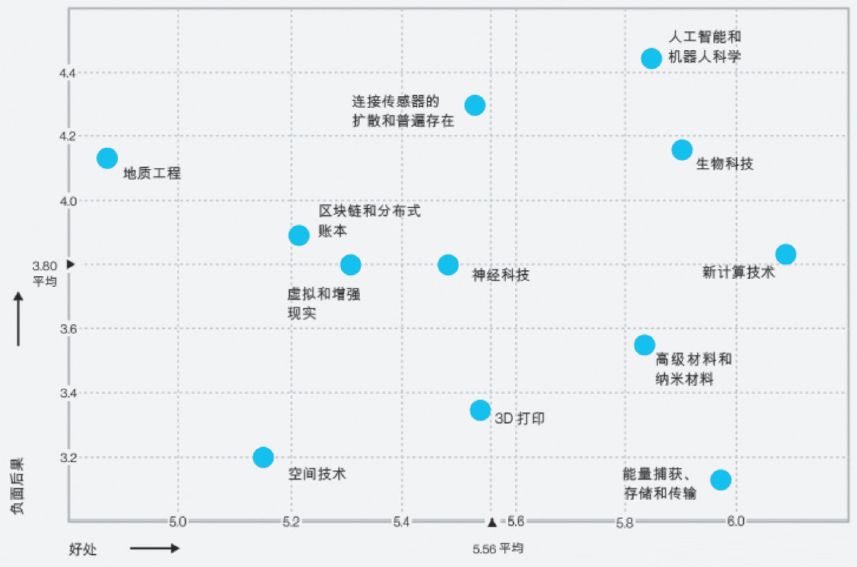Generative Artificial Intelligence Reshapes The Ethical Review And Governance Path For Cultivating Top Innovative Talents
Generative Artificial Intelligence Reshapes The Ethical Review And Governance Path For Cultivating Top Innovative Talents
Abstract Generative artificial intelligence is reshaping the methods of knowledge production and acquisition, and the ethical risks derived from the process of technology empowerment are becoming increasingly prominent. The rigid process and standardized management and control of traditional bureaucratic governance models show structural limitations in coping with the rapid iteration of technology and the dynamic evolution of risks.
Abstract Generative artificial intelligence is reshaping the methods of knowledge production and acquisition, and the ethical risks derived from the process of technology empowerment are becoming increasingly prominent. The rigid process and standardized management and control of traditional bureaucratic governance models show structural limitations in coping with the rapid iteration of technology and the dynamic evolution of risks. Agile governance is highly consistent with the complexity of ethical risks of educational technology due to its characteristics such as diverse collaboration, dynamic adaptation, rapid response and value orientation. A balanced agile governance model for the cultivation of top innovative talents can achieve a dynamic balance between the release of generative artificial intelligence empowerment potential and ethical risk prevention through systematic collaboration of institutional innovation, organizational reconstruction and technical design.
Keyword generative artificial intelligence; top innovative talents training; ethical risks; balanced agile governance; multi-level governance path
In the new era of digital transformation driving educational transformation, generative artificial intelligence is reshaping the knowledge production mechanism and talent training model with its independent learning, content creation and semantic understanding capabilities. The "Outline of the Planning for Building a Strong Education Country (2024-2035)" clearly proposes to "open up a new track of development with digitalization of education" and emphasizes "promoting artificial intelligence to assist educational reform"; the 2025 "Government Work Report" further requires the acceleration of the construction of a high-quality education system and strengthening the cultivation of top innovative talents. As the core element of innovation-driven development, the cultivation of top innovative talents lies in the systematic cultivation of breakthrough thinking ability, cutting-edge knowledge exploration ability and interdisciplinary integration ability. Generative artificial intelligence has shown significant advantages in promoting personalized learning paths, expanding cognitive boundaries and promoting knowledge integration, but at the same time it has caused ethical risks such as homogeneity of thinking caused by technology dependence, cognitive limitations caused by algorithmic bias, and resource differences caused by intensifying digital divide. The fundamental contradiction is that large language models are based on the principle of probability statistics and essentially tend to generate "centralized" mainstream expressions rather than marginal thinking required for innovation, which creates an internal tension between the goal of cultivating top innovative talents.
Ethical issues and governance difficulties in empowering the cultivation of top innovative talents by generative artificial intelligence
1. The empowerment characteristics of generative artificial intelligence and the current status of educational applications
Generative artificial intelligence takes large language models as the core technology foundation, generates emergent cognitive abilities through massive data training, showing multi-dimensional educational empowerment potential. In the process of talent training, its value is mainly reflected in the universalization of knowledge acquisition. Through natural language interaction, it breaks down professional knowledge barriers and makes knowledge in complex fields within reach; at the same time, it plays a synergistic role in the cognitive process, providing multi-angle concept analysis, systematic reasoning support and cross-domain creative stimulation, and enhancing learners' ability to deal with complex problems; more importantly, it achieves accurate adaptation of learning experience, and can provide customized content and feedback based on individual characteristics, thereby breaking through the constraints of standardized education on innovation potential and creating conditions for the personalized development of talents.
2. Empowerment needs and auxiliary innovation paradox for cultivating top innovative talents
As high-level talents who can lead the frontier development of disciplines and scientific and technological innovation, the top innovative talents focus on the cutting-edge knowledge exploration ability, the breakthrough ability of thinking paradigm and the cross-domain integration ability, and the cultivation path and general talent training model have significantly different. When generative artificial intelligence intervenes in the field of training top innovative talents, deep interactions and contradictions arise.
First, the tension of breakthrough thinking and algorithmic logic of talents. Top innovative talents need to break through existing paradigms, while generative artificial intelligence is determined by its statistical nature and tends to reproduce high-frequency patterns and common expressions in training data, making it difficult to generate truly original thinking. Students who rely too much on generative artificial intelligence are prone to fall into the "ability bottleneck" of homogeneity of thinking and low innovation independence.
The second is the paradox between the frontier exploration of talent knowledge and the boundaries of generative artificial intelligence knowledge. Generative artificial intelligence is limited by the scarcity of training data cutoff points and cutting-edge data, and there are obvious time boundaries and knowledge faults, which may produce "pseudo-frontier" phenomena and mislead research direction.
The third is the dialectical relationship between interdisciplinary thinking of talents and the integration of generative artificial intelligence assisted. Generative artificial intelligence is good at surface knowledge bridging based on statistical correlation, but the interdisciplinary thinking of cultivating top innovative talents requires in-depth cognitive reconstruction and creative integration. Faced with this essential difference, talent cultivation needs to position the knowledge correlation function of generative artificial intelligence as an exciter rather than a substitute.
3. Generative artificial intelligence empowers the ethical risks of cultivating top innovative talents
First, the risk of cognitive autonomy. The fundamental ethical challenge of generative artificial intelligence to the cultivation of top innovative talents lies in the potential erosion of cognitive autonomy. This erosion is not visible on the surface, but is gradually penetrated into the core links of the cognitive process through multiple paths.
First, innovative thinking outsourcing dependency. Innovative thinking includes complex links such as problem identification and critical analysis, and the ability of generative artificial intelligence to quickly generate innovative content tempts learners to outsource the thinking process that should have been completed independently. Second, cognitive process algorithm assimilation. Learners who frequently use the same generative artificial intelligence will gradually show similar characteristics, which will eventually lead to the singularization of thinking perspectives and the convergence of innovation paths. Third, critical thinking training collapses. As the core literacy of innovation, critical thinking needs to be formed through long-term and systematic cognitive training. The instant answers provided by generative artificial intelligence have caused learners to lose key training opportunities for information screening, evidence trade-offs and independent argumentation.
The second is to recognize the risk of fairness. Generative artificial intelligence on the surface provides all learners with equal access to knowledge, but in fact it raises structural risks in the allocation of cognitive resources.
First, resource acquisition is super elite. The advanced payment model and supporting support systems form a substantial "digital wall", and the differences in technology empowerment capabilities have also permeated the entire usage ecosystem. Second, knowledge framework bias inhibits innovation diversity. Large language models show obvious knowledge distribution preferences, are better at the traditional analytical reasoning and quantitative methods of Western academics, and invisibly guide outstanding innovative talents to move forward along the thinking path of "mainstream recognition". Third, the metacognitive capital gap strengthens the deviation in talent selection. In the selection of top innovative talents, skilled tool users rather than real innovative thinkers may be overrewarded, leading to the homogeneity of the innovative talent team.
The third is academic ethical risks. The in-depth intervention of generative artificial intelligence is fundamentally reshaping the attribution recognition and value evaluation of academic innovation, and has caused a series of academic ethical challenges in the cultivation of top innovative talents.
First, the original boundary is dissolved. Generative artificial intelligence deeply participates in the entire process of talent innovation, from inspiration to plan construction and then to results interpretation, forming a "human-machine co-creation continuum", making original judgments highly vague and profoundly affecting the thinking independence and academic confidence of top innovative talents. Second, knowledge belonging is suspended. Generative artificial intelligence is based on massive data training and cannot be traced, resulting in a new phenomenon of "reproduction of knowledge without belonging", weakening the sensitivity of future scientific research leaders to intellectual property rights. Third, motivation distortion and depth capability are lacking. The cultivation of top innovative talents not only focuses on selection fairness, but also on the quality of long-term ability cultivation, while generative artificial intelligence creates a typical "efficiency-capacity" paradox.
4. Ethical risk governance dilemma of generative artificial intelligence empowering the cultivation of top innovative talents
The in-depth application of generative artificial intelligence in the cultivation of top innovative talents has exposed the systemic dilemma of traditional bureaucratic governance models.
First, the system lags, and the conflict between rigid rules and technical dynamics. In recent years, my country has successively issued relevant policies or regulations and has initially built a framework for the governance of artificial intelligence education, such as the "Action Plan for Artificial Intelligence Innovation in Higher Education Institutions" and the "Ethical Specifications for the New Generation of Artificial Intelligence", but traditional governance relies on preset rules and standardized processes, while generative artificial intelligence risks continue to evolve with the iteration of technology. This essential contradiction between static governance and dynamic risks is particularly significant in the field of cultivating top innovative talents.
The second is the fragmentation of rights and responsibilities and the coordinated dilemma of diversified governance subjects. Generative artificial intelligence governance presents typical multi-center characteristics, forming a complex responsibility network in the field of training top innovative talents. There are systemic coordination barriers between the various governance entities. Government departments have institutional authority but lack technical sensitivity. Colleges and universities pursue innovative applications but have relatively weak awareness of ethical risks. Technical enterprises master the core of algorithms but are not sound social responsibility mechanisms. Front-line teachers and students face practical challenges but lack effective response tools.
The third is the imbalance of tools and the structural mismatch of rigidity and soft means. In the field of training top innovative talents, mandatory regulatory tools often form a "one-size-fits-all" constraint on innovation activities, inhibiting high-risk and high-value exploratory research and free innovation, but failing to accurately identify and prevent dispersed risks; at the same time, the absence of guiding tools makes it difficult to internalize ethical norms, accelerates the accumulation of hidden risks, and forms a paradox of coexistence of "over-control" and "regulatory vacuum".
Balanced agile governance model and implementation path for the cultivation of top innovative talents
Agile governance, as a new paradigm in the context of the Fourth Industrial Revolution, emphasizes the characteristics of adaptability, diversified coordination and value guidance. The balanced agile governance model is an innovative expansion of traditional agile governance, building a balanced mechanism of "technology empowerment and ethical protection". Through institutional innovation, organizational reconstruction and systematic collaboration of technology design, it not only releases the cognitive enhancement potential of generative artificial intelligence in the cultivation of top innovative talents, but also prevents its structural erosion of cognitive autonomy, fair development and academic integrity.
1. Cognitive autonomy balance mechanism
The cognitive autonomy balance mechanism aims to solve the problems of innovative thinking outsourcing, algorithm assimilation and critical thinking collapse caused by generative artificial intelligence, and ensure the thinking independence of top innovative talents through multi-level intervention.
At the teacher level, implement the transformation of the ability-empowered teaching paradigm. Teachers should shift from knowledge transfer to thinking cultivation. When reshaping teaching objectives, it is necessary to clearly place the cultivation of questioning ability, innovative thinking and original thinking on knowledge acquisition; when innovating teaching methods, forced thinking links can be designed and the principle of "before people and then machines" can be implemented, requiring students to complete key thinking links independently and then use generative artificial intelligence assistance; at the same time, change the role of teachers, change from knowledge authority to thinking coach, and guide students to realize the thinking dependence brought by artificial intelligence assistance. The specific implementation can be implemented using gradient strategies. In basic tasks, only generative artificial intelligence processing data collection and other auxiliary work are allowed; the advanced stage requires students to clearly mark their contribution boundaries with generative artificial intelligence; in the innovation stage, human-computer confrontation training is established to guide students to criticize, refute, or even surpass generative artificial intelligence conclusions, and cultivate the ability to question the authority of algorithms.
At the university level, embedded cultivation of students' "five forces" of digital literacy. Colleges and universities should focus on improving students' technical understanding. By offering compulsory courses for the principle of generative artificial intelligence, students can understand the limitations of the model; cultivate students' critical evaluation ability, design generative artificial intelligence output quality evaluation experiments, and train students to identify content reliability and biases; cultivate students' innovative application ability, and use innovative thinking workshops to cultivate students' use generative artificial intelligence as a thinking expansion tool; cultivate students' metacognitive regulation ability, establish a technology-dependent self-monitoring system, and regularly evaluate students' dependence on generative artificial intelligence; cultivate students' ethical decision-making ability, develop a human-machine collaboration ethical decision-making case library, and improve students' judgment ability in complex situations. Colleges and universities should embed the "five forces" training into the entire process of cultivating top innovative talents, use micro modules to embed professional courses, ensure that each course must include discussions on the applicable boundaries of generative artificial intelligence; design student-led analysis of human-machine thinking differences through problem-oriented embedding seminars; integrate innovative experiments into project practice, and require innovative projects to include comparative verification of generative artificial intelligence assistance and human independent work.
At the technical level, build a multi-level transparent mechanism. Improving the comprehensibility of generative artificial intelligence systems is a technical prerequisite for ensuring cognitive autonomy. To improve design transparency, technology developers must disclose model architecture, training data sources and functional boundary limitations; colleges and universities can establish an education artificial intelligence system registration platform to rating transparency for all artificial intelligence systems used in schools. To improve process transparency requires educational applications to realize the visualization of thinking paths, such as displaying the artificial intelligence reasoning process through thinking maps. Improve the transparency of results, develop a confidence indication system, and clearly mark the certainty degree of artificial intelligence output. Improve impact transparency, establish a cognitive impact tracking system, and monitor the impact of artificial intelligence on learning behavior and thinking patterns for a long time.
2. Framework for fair resource allocation
The resource fair distribution framework mainly solves the problems of hyper-elite technology acquisition, knowledge framework bias and metacognitive capital gap, and ensures the inclusiveness and diversity of technology empowerment.
At the government level, hierarchical supervision and inclusive resource policies have been introduced. First, implement the universal project of artificial intelligence education resources, provide national high-quality artificial intelligence platforms for all types of universities, unify service standards, and eliminate gaps in technology acquisition. The second is to establish a special fund for the cultivation of artificial intelligence resources for top innovative talents, focusing on supporting the construction of artificial intelligence infrastructure in universities with weak resources. The third is to establish an algorithm bias monitoring center, regularly evaluate the knowledge diversity and cultural inclusion of mainstream educational artificial intelligence systems, and issue bias risk warnings. At the same time, a differentiated regulatory framework should be built to implement precise governance for different risk levels. For example, for teaching auxiliary applications, low-intensity supervision is implemented, and only data security baselines are set; for thinking cultivation applications, trigger supervision is implemented, artificial intelligence intervention threshold and automatic early warning mechanism are set; for capability assessment applications, high-intensity supervision is implemented, and algorithm disclosure and diversified verification are required.
At the university level, establish a distributed institutional structure and capacity balance measures. First, build a multi-level institutional framework, formulate standards for fair use of generative artificial intelligence across the school at the core system level to ensure equal access to students from different backgrounds; at the semi-autonomous unit level, each college is authorized to formulate differentiated application strategies based on the characteristics of the subject. The second is to establish a digital resource balance mechanism within the school, establish a cross-college and departmental artificial intelligence resource sharing platform; develop a metacognitive ability assessment and training system to provide personalized training for the differences in technical literacy of different students; form an artificial intelligence education fair promotion group participated by teaching design experts, technicians and representatives of students from multiple backgrounds, regularly evaluate the accessibility and inclusiveness of artificial intelligence applications in the school, and propose improvement measures; provide targeted improvement plans for subjects with weak resources, and prioritize the allocation of relevant resources.
At the technical level, develop diversification enhancement and bias mitigation designs. Systematically respond to bias problems at the technical design level. First, develop knowledge diversity enhancement modules, requiring educational artificial intelligence systems to support diversified knowledge representations and systematically embed China's independent knowledge system, research methods and interdisciplinary knowledge. The second is to implement an algorithm bias detection and compensation mechanism, and by adding multiple training data and adjusting recommendation algorithms, we ensure that different thinking paths have equal opportunities to display. The third is to establish cultural sensitivity assessment standards, and adjust the interactive interface and content presentation methods for learners from different cultural backgrounds. In addition, build a capability difference adaptive system, dynamically adjust the interface complexity according to the user's metacognitive ability level, provide targeted prompts and guidance, and lower the threshold for technical literacy; at the same time, develop a fair use certification mechanism, requiring all artificial intelligence systems used to cultivate top innovative talents to pass accessibility, diversity and inclusive testing to ensure that existing resources and cognitive gaps are not strengthened.
3. Academic integrity and innovation belonging guarantee system
The Academic Integrity and Innovation Attribution Guarantee System aims to deal with the problems of original boundary dissolution, knowledge attribution suspension and incentive distortion brought about by generative artificial intelligence, and establish new academic norms that adapt to technological changes.
At the university level, establish a new academic integrity framework. First, build academic norms for generative artificial intelligence collaboration and clearly define the reasonable boundaries and ethical requirements of human-computer collaboration. Formulate grading standards for the use of artificial intelligence, such as concept inspiration level, data collation level, expression optimization level, solution construction level and their corresponding citation requirements, and include them in the academic manual. The second is to establish a mechanism for declaring the contribution of generative artificial intelligence, requiring all academic achievements to clearly mark the degree of participation and specific links of generative artificial intelligence, and adopt a unified format to ensure transparency and comparability. The third is to develop an academic originality assessment toolbox, including multiple evidence assessment method, process verification method and capability reproduction method, to reduce dependence on single text similarity detection. At the same time, we will promote the institutionalization of ethical decision-making, establish an interdisciplinary artificial intelligence academic ethics committee, which is responsible for formulating norms, reviewing complex cases and updating ethical guidelines; develop academic integrity training courses for the era of artificial intelligence, set them as a compulsory content for the cultivation of top innovative talents, and systematically cultivate students' ethical sensitivity in a technology-assisted environment.
At the teacher level, reconstruct the evaluation system and incentive mechanism. First, establish a multi-dimensional evaluation system that attaches importance to process and capabilities. The evaluation criteria should focus on the quality of thinking process, innovative uniqueness and metacognitive reflection ability, and be evaluated through the thinking logs and demonstration derivations submitted by students. The second is to design a capability verification assessment mechanism, such as setting up key link evaluations that must be completed in a generative artificial intelligence environment, or requiring students to explain and expand the content generated by artificial intelligence. The third is to establish an advanced evaluation mechanism, and as the learning stage improves, the proportion of requirements for independent thinking is strengthened. By establishing a reward mechanism for deep thinking, we will clarify the critical thinking and original breakthroughs of rewards, rather than focusing only on output quantity; establish a dual-track system for independent capabilities and artificial intelligence assistance, and consider both types of capabilities in the evaluation to avoid one-way incentives.
At the technical level, we propose responsible innovation practices. Technology providers should ensure academic ethics from the source through a responsible innovation framework of "foresight-reflection-inclusive-responsiveness". In the foresight stage, it is required that the academic impact assessment of artificial intelligence must be conducted before technology development, and the potential impact on originality, attributes and incentive structures are systematically predicted; in the reflection stage, interdisciplinary experts need to be organized to regularly review design decisions and value assumptions to identify potential ethical blind spots; in the inclusive stage, representatives of top innovative talents are included in the entire process of technology design to ensure that their needs and ethical concerns are fully considered; in the response stage, a rapid response mechanism for ethical issues is established and the discovered ethical risks are timely adjusted. At the same time, we develop traceable artificial intelligence systems, record the source and reference materials of artificial intelligence generated content through blockchain and other technologies, and improve the transparency of knowledge attribution; design original enhancement functions, such as providing diversified ideas rather than single answers, and encourage users to think critically and transcend system suggestions.
Through the above three mechanisms and their multi-level implementation paths, the balanced agile governance model can effectively deal with the multi-dimensional ethical risks brought by generative artificial intelligence to the cultivation of top innovative talents, while ensuring the vitality of technological innovation, and building a solid ethical guarantee line of defense, achieving a dynamic balance between technology empowerment and the essence of talent training. The balanced agile governance model is not only suitable for the current stage of technological development, but also its dynamic adaptation and circular iteration characteristics also enable it to have the ability to adapt to future technological evolution.





